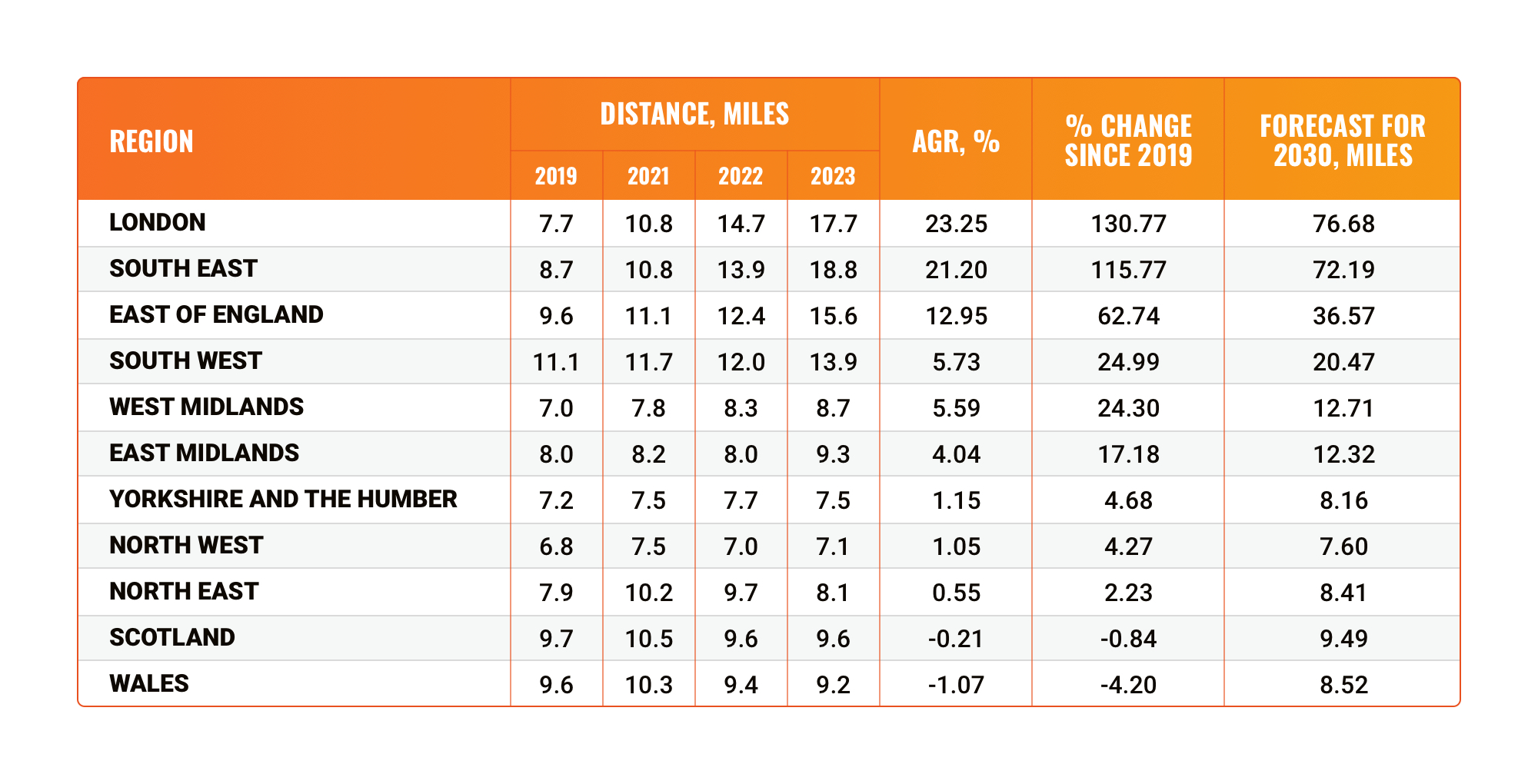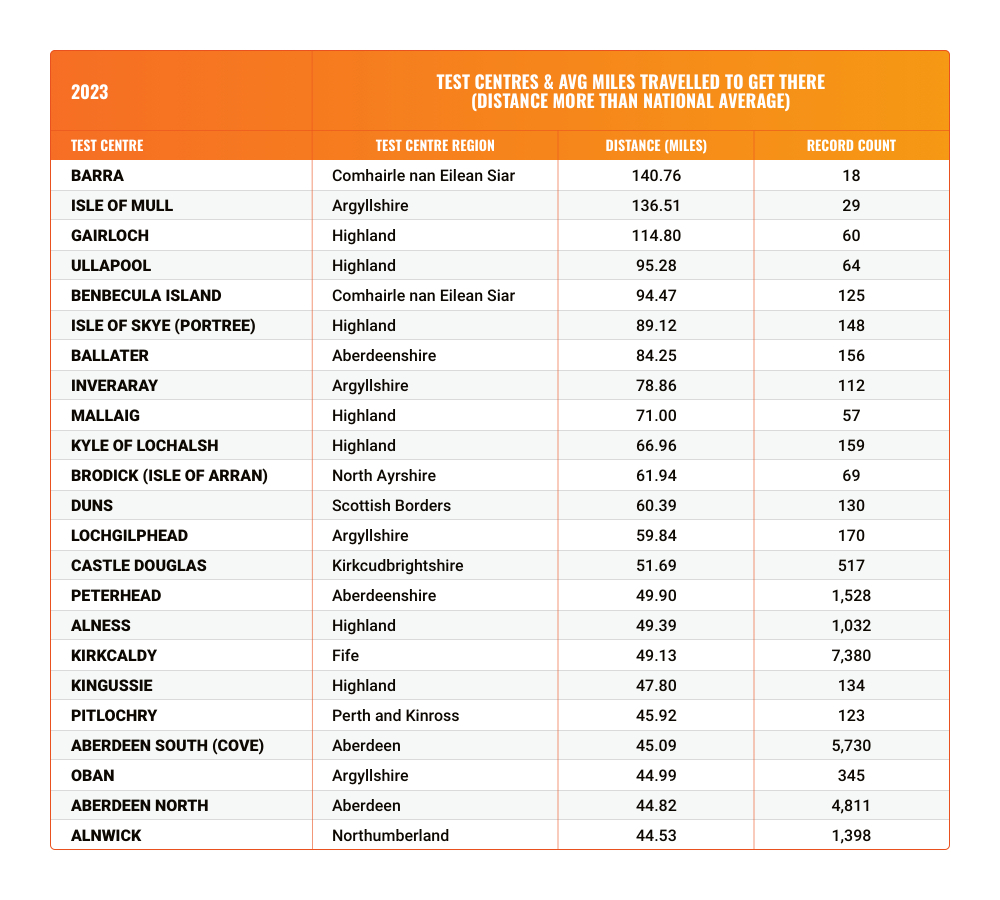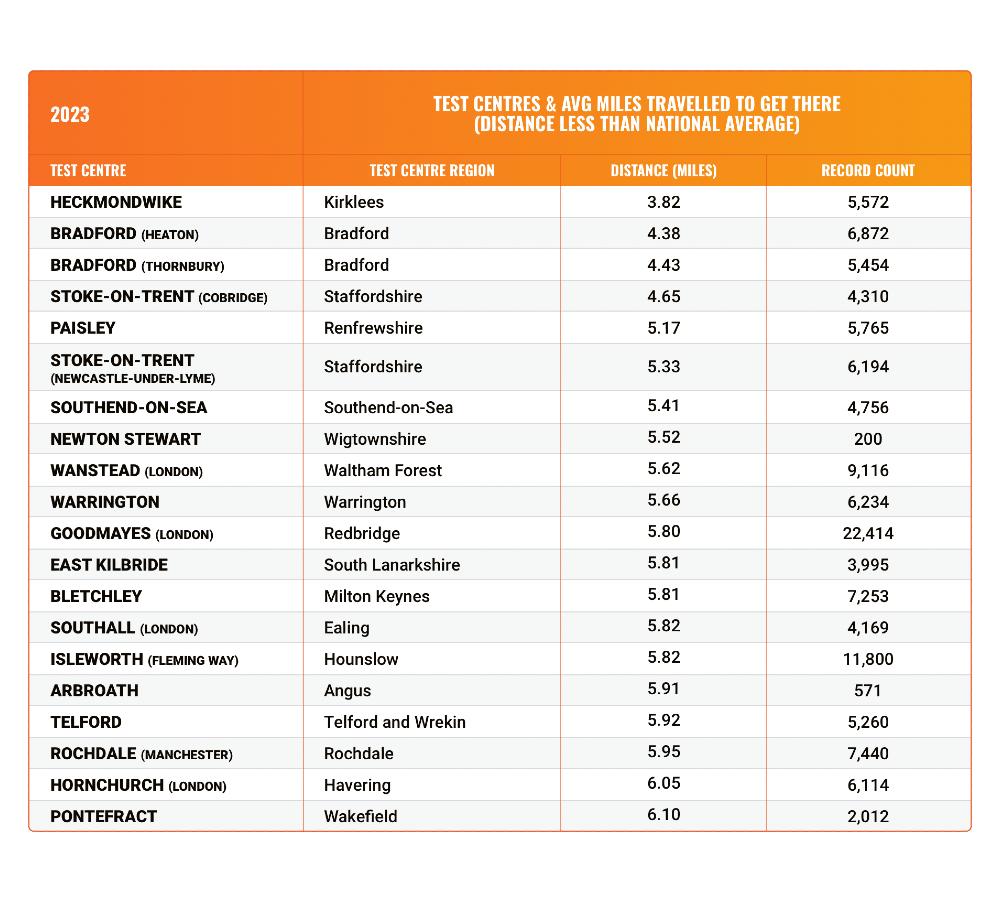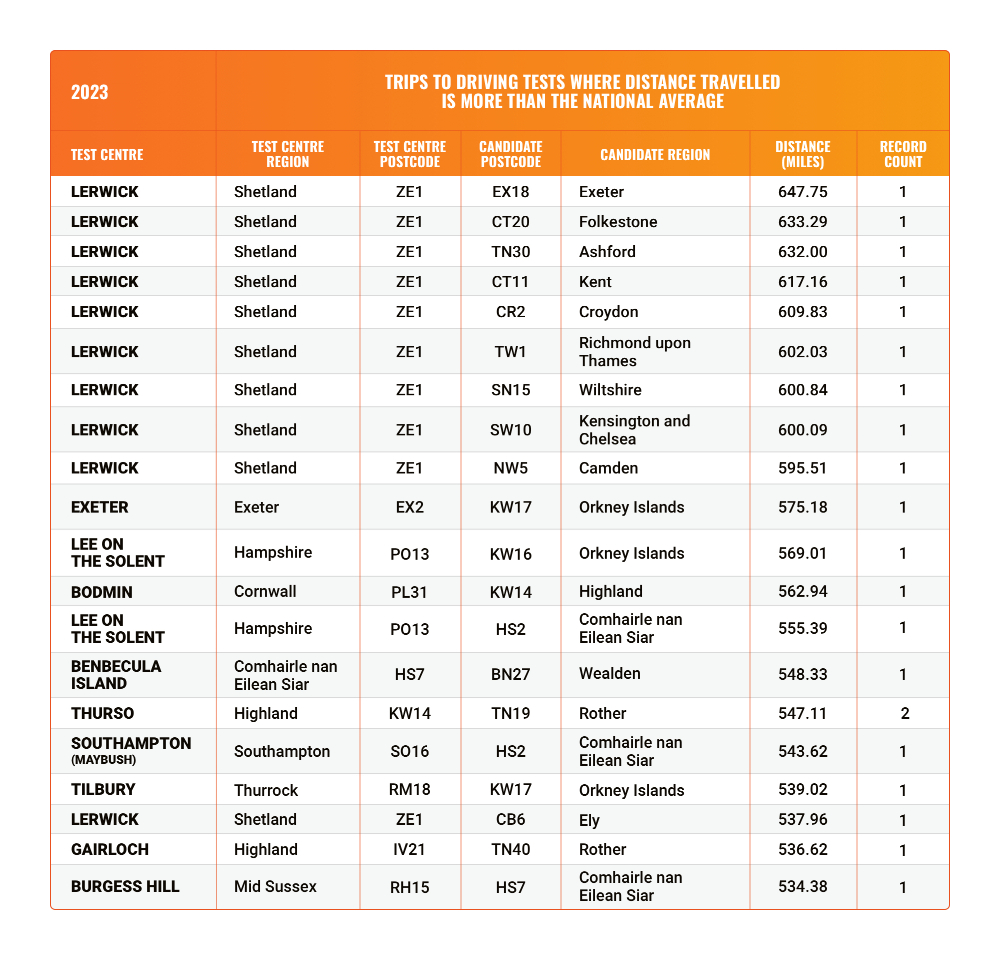As the driving test backlog continues to mount and with reports of test centres closing down over the past year, plus the issue of bots bulk buying test slots, learners are, literally, having to go to new lengths to get a test.
Following an in-depth analysis into driving test records obtained through multiple Freedom of Information (FOI) requests to the Driving and Vehicle Standards Agency (DVSA), we’ve trawled through more than six million records to establish the movements of learners and where tests are being conducted.
The distance travelled for a driving test is rising across the UK
Between 2019 and 2023, the average distance travelled for a driving test by learner drivers across the UK has increased by 48%. Increasing from 8.33 miles in 2019 to 12.33 miles in 2023. The largest driver to this change is likely to be the pandemic and the resulting backlog of driving tests.
When omitting 2020 data, where driving tests were largely paused due to the COVID-19 outbreak we can see that every year the average distance travelled increases by 10.30%.
If this trend and rate of growth continues, we could see learners having to travel almost 25 miles for a test (24.49 miles) in 2030 - that’s a 194% increase on 2019.
We spoke to driving instructor Mark Steeples from Pass Mark School of Driving to find out his opinion on the distance travelled for a test in 2023, he said:
“I find it pretty astonishing that learners could end up having to travel around 25 miles for a test.
“I’m amazed at the year-on-year increase in distance travelled for a test, but I suppose it shows the desperation that people have in wanting to learn how to drive and they’ll go to any means necessary to do it.”

The distance travelled varies across the UK from region to region
Our data shows stark regional variations in the distance we see candidates travelling for tests.
In 2023 learners in the South East of the UK travelled further than anyone else, on average 13.9 miles, while those in the North West were only having to travel an average of 7.1 miles.
When looking at the year-on-year data for distance travelled by region (omitting 2020) we start to see some alarming data points. Distance travelled for a test by learners in London has increased from 7.7 miles in 2019 to 17.7 miles in 2023, a 130.77% increase, with the distance growing on average by 23.25% each year.
We can see similar growth in the South East and the East of England, indicating that learners in these three regions are all struggling with the impact and pressure to get a driving test.
By taking the annual growth rate (AGR) between 2019 & 2023 and forecasting the distance travelled forwards we can see some predictions which might not make for positive reading for learners in these locations. Based on the growth rate in London between 2019 and 2023, it’s predicted that learners could travel on average more than 76 miles for a driving test.
In fact, learners in London, the South East, East of England and South West, could all be travelling upwards of 20 miles on average for a driving test in 2030.

Which test centres are people travelling to more than the national average to visit?
As part of our analysis we also looked at driving test centres across the UK, establishing the average distance that was travelled to reach them for a test in 2023.
Every test centre in the top 22 is based in Scotland, with learners travelling an average of 140 miles to the Isle of Barral test centre. Outside of Scotland, learners travelled an average of 44.5 miles to the Alnwick test centre in Northumberland, which has an above average pass rate. This could imply that learners are willing to travel considerable distances for what is perceived as an ‘easier’ pass. For much of Scotland though, it could be the case that there aren’t enough well-located test centres to account for learners nearby.

Which test centres are people travelling to less than the national average to visit?
Conversely, learners travelling to the Heckmondwike test centre in Kirklees, West Yorkshire are making the shortest journey in the UK, with an average distance of 3.82 miles travelled.
In fact, there were 169 test centres across the UK in 2023 where the average distance travelled to reach them was below the national average.
For all of the test centres below where the distance travelled to is less than 12.33 miles, we can assume that they’re more ideally located to cater for learners in the surrounding area, with potentially less competition for a test.

How far would you go to secure a test?
There have been some documented cases in recent months where learners have spoken out about having to travel hundreds of miles for a test.
Our analysis shows that it’s not just a few outliers that are making the 100+ mile trip for a test, in fact there’s more… much more.
In 2023, one learner travelled from Exeter, all the way to Shetland, a 647 mile journey. With another travelling 633 miles from Folkestone to Shetland.
Among the top 20 cases,10 of the longest distances travelled were from learners travelling upwards of 537 miles to Shetland from different parts of the UK. Below is some of the journeys made in 2023, where the distance travelled for a test was more than the national average.
Mark commented on how he’d had enquiries from people wanting to travel for a test:
“I’ve had enquiries from people who want to learn and get into a test around 50 miles away from me. Why go to an area that you don’t know? It’s hard enough doing a test anyway, you have a lifetime to drive on the UK roads, but don’t pick the day of your driving test to do that. A lot of instructors just teach test routes in the local area, but that means that most learners won’t be prepared for any test route and the potential impacts of driving in a new place.”
In email response to our FOI, the DVSA says it should be noted that candidates postcodes when taking a driving test aren’t validated, it simply accepts what the candidate tells them, therefore the data is reflective of what the candidate has said when they take their test.
We don’t believe that all cases in this data are where people have travelled hundreds of miles for a test. A reason for some of the lengthy distances travelled could be where students, as an example, have given the postcode of their home address rather than their university home address or vice versa. But, this likely isn’t the sole reason we’re seeing so many individual cases of long distances travelled and we certainly believe that some of the lengthy travels here are legitimately learners travelling across the country for a test.
Mark had more advice on how learners can get ahead of the backlog which he shared with us here.

Methodology:
We submitted multiple Freedom of Information requests to the DVSA asking for data to illustrate the distances travelled for driving tests across the UK between 2019 and 2023, to gauge whether there was an issue in learners travelling further afield for tests in light of the pandemic and the ongoing backlog of tests. We asked for UK-wide data of every car driving test conducted, with the postcode of the test centre and the first half of the postcode of the learner e.g. NG1, NG2, NG3 etc to avoid identification of specific people.
Once we had all of the data from the DVSA, we collated longitude and latitude coordinates for all postcode outcodes. These coordinates allowed us to establish ‘as the crow flies’ distances between two postcode outcodes, allowing us to gauge a distance between two locations e.g. a test centre and a learner’s address. It’s worth mentioning that due to us only using the learner’s postcode outcode, the distance calculated is from the centre of the postal area, rather than a specific address within that area.




